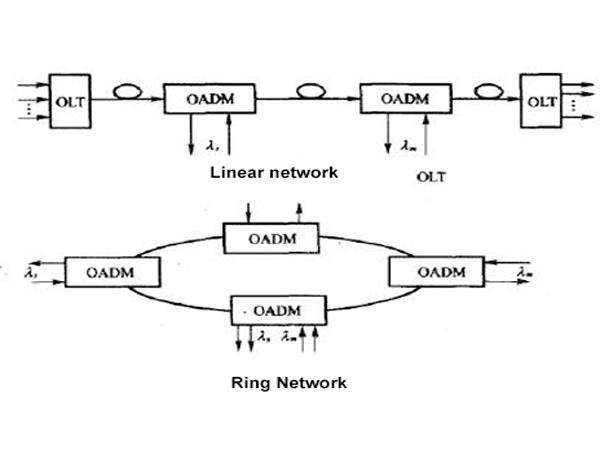
Classification and characteristics of optical splitter multiplexers
The main function of OADM is to separate or insert one or more wavelengths from multi-wavelength channels. There are two types, fixed type and reconfigurable type.
The fixed type can only have the next or more fixed wavelengths, and the routing of the nodes is determined; It lacks of flexibility, but reliable performance, small delay.
It is heavy configurations can be dynamically adjust the wavelength of high node channel up and down, which can realize the dynamic reconfiguration of optical network, have good distribution network wavelength resource but complicated structure can be used to build array waveguide, optical fiber grating and so on the many kinds of filter out of the different structure of high speed, also can use all fiber optic technology high speed of all-fiber structure is constructed.
However, the basic requirements are the same regardless of the structure of OADM (low insertion loss, high degree of isolation between channels, insensitive to environmental temperature changes and polarization, and able to tolerate wavelength drift and jitter of the signal source within a certain range). OADM should be able to ensure that the power transmitted between channels is basically consistent during the process of up and down the channel. The operation of OADM should be simple, convenient and achieve a high performance/price ratio.
Optical splitter multiplexer is a communication device in the network, and a communication device also represents a network node. Some businesses sent from the network need to "get off" at the network node and enter the network node for subsequent processing, and some directly pass through the network node. There are also businesses in the network node that need to "get on" and send to the network. Therefore, the function of optical splitter multiplexer is to separate the channel that needs to be down, join the channel that needs to be on the road, and the channel that has nothing to do with it will pass directly.
Application of OADM in all-Optical network
The OADM equipment is useful in both long - distance trunk line and man.
In mainline applications, THE OADM is the preferred device for intermediate nodes with upper and lower operations.
The main battlefield of OADM application is the METROPOLITAN area Network (WAN), which can give full play to its flexibility in networking, easy network upgrade and expansion, making it an ideal multi-service transmission platform for METROPOLITAN area network applications.
Optical divider multiplexer (OADM) allows different wavelength signals of different optical networks to be subdivided and multiplexed at different locations. Optical cross-connection (OXC) devices allow different networks to be combined dynamically and allocate wavelength resources as needed to achieve a wider range of network interconnection. Multiplexing multiplex high light and optical cross connect (devices will only need to download information for the node processing equipment (including ATM, SDH switch and IP router), without the need to direct this node processing of information by channel of light through this node, thus greatly improve the efficiency of the node processing information, take electric processing nodes must arrive at the IP packet processing for all faults.
Optical Code division Multiple Access (OCDMA) is a good all-optical networking technology, which avoids the "electronic bottleneck" effect of communication equipment and queuing delay of network protocol, and can realize high-speed information transmission and quickstep asynchronous information access.
In the all-optical backbone network composed of OCDMA technology, the information up and down can be carried out in the nodes or at any place where the optical fiber line passes, and the normal transmission of other users on the optical fiber line will not be affected. It overcomes the limitation that the information up and down only can be carried out in the nodes in the traditional network. Optical path up and down can be carried out at any time between two optical cross connection nodes or optical switching nodes as required.
